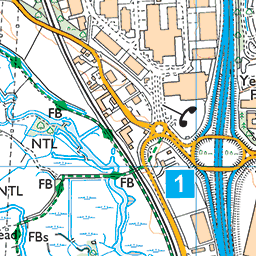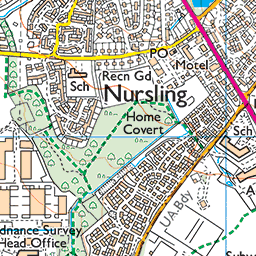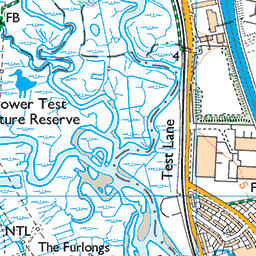From Buriton to Steyning
Ancient history abounds on this 3 day stretch along the South Downs Way. Starting at the historic village of Buriton and ending at one of the prettiest villages in Sussex, Steyning, the route winds its way through an unspoilt network of dry chalk valleys, past Bronze age burial sites, Roman villas and prehistoric forts offering many exciting opportunities to explore off Trail along the way.
Tour Overview
The icons below highlight the distance, difficulty and theme of this itinerary.
Distance
35 Miles/ 72.4Km
Days
3
Grade
Gentle
Theme
History
Landscape Type
Rolling Countryside
South Downs Way - From Buriton to Steyning
Here's everything you need to help you plan your very own walking adventure. Click on the blue arrow tabs below for more information.
- Itinerary
- Accommodation
- Travel
- Advice
- Food & Drink
- Maps, Guidebooks and Merchandise
Itinerary
A reasonable level of fitness is required to walk this undulating section of the South Downs Way. Expect good paths with dry, chalk valleys, woodland pasture and a few short steep climbs.
Day 1 - Buriton to Cocking Hill
Buriton to Cocking Hill
From here on the trail follows the ridge-line nearly continuously to Eastbourne with constant views north over the wooded Weald of Sussex and south to the English Channel. This section passes the National Trust’s Uppark House with its distinctive folly on Tower Hill and on to Harting Down. There are good links here to Harting village with good public transport links to Chichester, shops, accommodation and pubs. Harting Down is a wonderfully unspoilt network of dry chalk valleys where you can feel miles from any civilisation and worth exploring the valleys running off the trail. The South Downs Way contours around Beacon Hill and for those with the energy it is worth climbing straight up to the summit to take in the panoramic views. Carrying on eastwards the trail passes the Devil’s Jumps. These are a line of well preserved large Bronze Age Burial mounts that can be accessed from the Trail. Continuing east on an undulating route the trail passes on of Andrew Goldsworthy’s large chalk ball sculptures before descending to Cocking Hill, from where you can drop down to Cocking for food and accommodation.
10 miles (16.1 Km)
Day 2 - Cocking Hill to Amberley
Cocking Hill to Amberley
This section of the trail is a mix of woodland, pasture and wild flower glades. It is the most wooded section of the trail. From Cocking Hill the trail ascends a long but gradual hill towards Charlton Forest. You can then enjoy a number of connected reserves managed by the Murray Downland Trust and the Graffham Downland Trust. The trail passes some more fine examples of Bronze Age burial mounds and this is a great spot to stop and picnic. After crossing the A285 the route ascends once again to Bignor Hill where you can see a fine example of a surviving Roman road. A short detour down the hill will take you to Bignor Roman Villa which boasts the finest preserved mosaic in the country. A short distance on brings you to stunning views across the Arun Valley from where the trail descends to the River Arun and the village of Amberley. Amberley has a direct train line to London, cafes and pubs. This is also the halfway point! If you have the time visit Amberley Museum; a museum of rural and industrial heritage.
12 miles (19.3 Km)
Day 3 - Amberley to Steyning
Amberley to the Steyning and the River Adur
From here on the trail becomes gradually more and more open through a landscape of mixed farmland. A steep climb starts this section up to Amberley Mount but then levels off before descending to Washington. This section is bounded by almost continuous open access land where you can escape from the trail and enjoy the species rich chalk grassland. A short detour to the south of Kithurst Hill will reward you with the unusual sight of an old WWII Churchill tank. Used by troops for target practice and riddled with bullet holes she remains there as a reminder of the importance of the South Downs as a training area during the Second World War. The trail has 2 routes to cross the A24 at Washington. The safer route uses a bridge after heading north and down Barnsfarm Hill and passed the lovely flint church at Washington. Washington has a good pub and shop (attached to the pub). After Washington the trail ascends steeply up towards Chanctonbury Ring. This ring of Beech trees planted by the Goring Estate is surrounded by myth and legend and planted on an Iron Age Hill fort that also has the remains of a Roman temple within. After rounding the hills above Steyning (Drop down for shops, refreshment and accommodation) the trail descends towards the River Adur.
13 miles (20.9 Km)
Accommodation
Accommodation is available at the start of the walk, either in Buriton or nearby Petersfield and at the end of each day but they are small villages and so it is advisable to plan and book ahead. Accommodation along this stretch can be viewed on the itinerary map.
To make your journey more enjoyable you may want to use a baggage transfer company to transport your luggage.
Travel
Air / Rail
The nearest airport to Buriton is Southampton Airport (18.8 miles / 30.3 kilometres) Gatwick Airport (33.8 miles / 54.4 kilometres) Heathrow Airport (38.1 miles / 61.4 kilometres and Bournemouth Airport (42.6 miles / 68.5 kilometres)
There is a direct train to Petersfield (2 miles from Buriton) from London Waterloo and Guilford,
There is a bus from the end destination, Steyning to Brighton where you can take a train to London or Reading; here there are good connections to the rest of the country
Download the South Downs Way Public Transport network map here: South Downs Bus Map.
Advice
This section of the South Downs Way is quite open and exposed to the elements and we advise that you choose footwear, clothing and sun protection appropriate to suit the predicted weather.
Food & Drink
Buriton is a very small village with no shops so be sure to stock up for your first days journey before you arrive. Petersfield is 2 miles away and has a good selection of shops and cafes. Cocking at the start of day 2 has a small well stocked village store, as has Amberley at the start of day 3.
Finding food or places to eat along the way may be quite difficult so be sure to plan your food and drink in advance and carry enough supplies for the day with you.
Maps, Guidebooks and Merchandise
The official guidebook and map for the Trail are available from the National Trails Shop along with a wide range of gifts and other merchandise.
Itinerary Map
View information on the map by ticking the boxes in the Map Filter. Drag the map and use the zoom tool to navigate.
Added to your Itinerary Planner below
Distance calculator
Map Filters
Customise your trip with our filters.
Map Filters

Toggle between the options below to show available markers.
General info Equestrian Info Cycling InfoAccommodation
Points of interest
Services
Routes
Accommodation
Points of interest
Transport
Accommodation
Points of interest
Transport


















The custom route elevation is created when you use the distance calculator (above) to draw a line.
The custom route elevation is created when you use the distance calculator to draw a line.

Other itineraries that may interest you
Looking for something similar? Here are some ideas we think you'll love…




